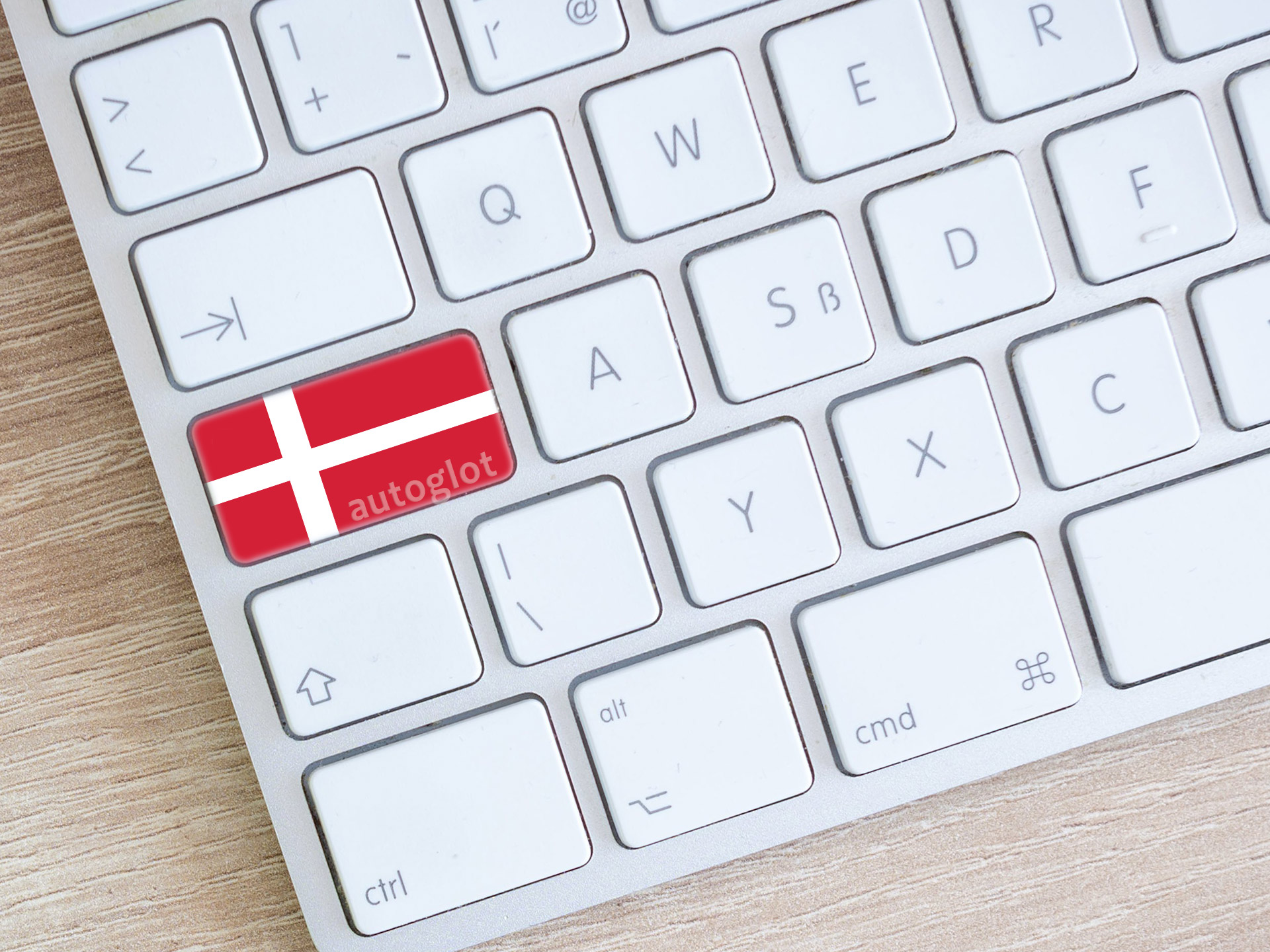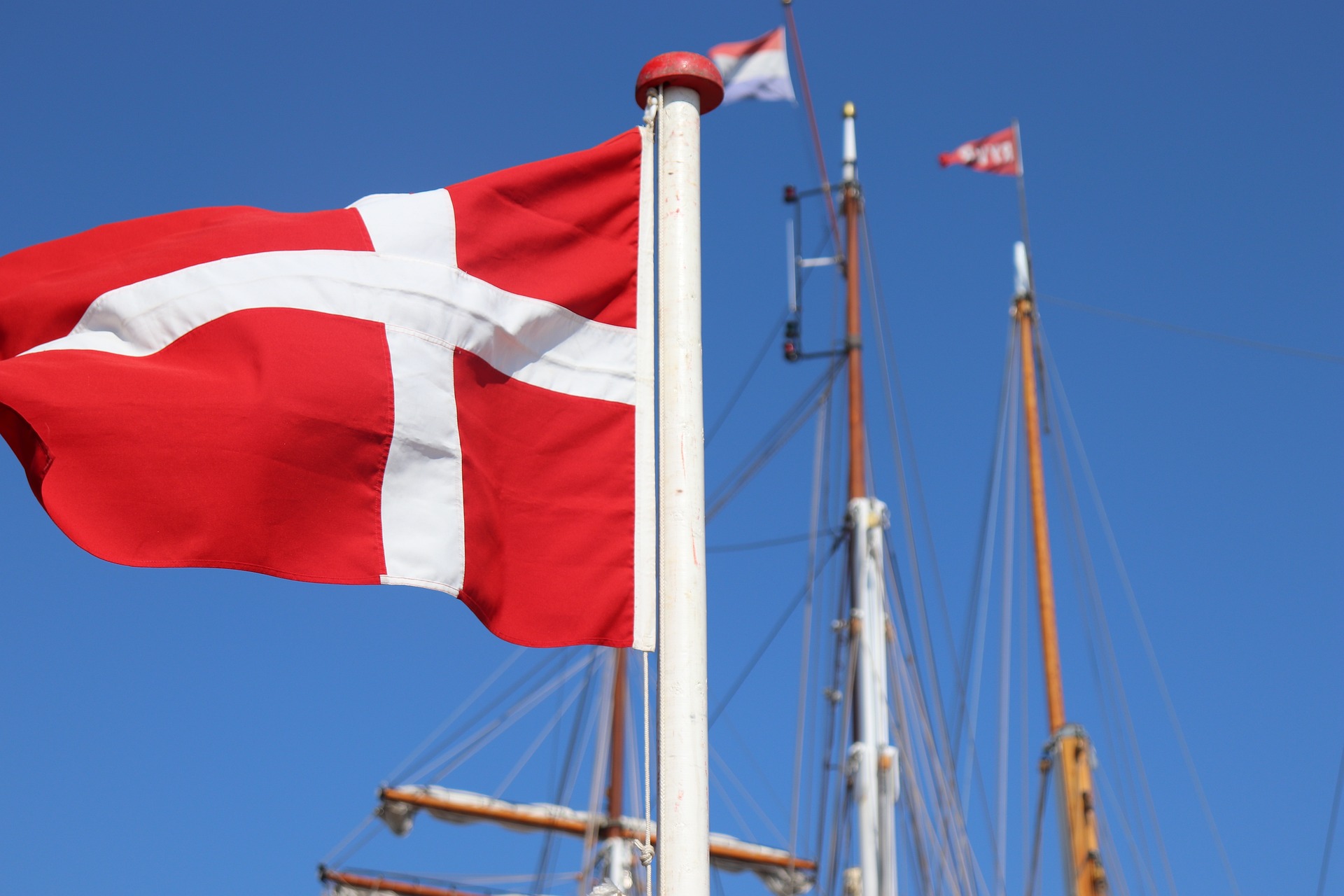
Die Bedeutung mehrsprachiger Websites kann nicht genug betont werden. With the global marketplace expanding exponentially, businesses and individuals alike are recognizing the immense benefits of reaching audiences in their native languages.
One language that holds significant relevance in the context of creating multilingual websites is Danish.
Introduction to Multilingual Websites and Translation to Danish
Danish, a North Germanic language, is spoken by approximately 6 million people worldwide. While primarily used in Denmark, it also holds official status in the Faroe Islands and Greenland, making it a key language for those seeking to engage with audiences in these regions.
The Danish language boasts a rich history, dating back to the Viking Age. Im Laufe der Jahrhunderte hat es sich zu einer unterschiedlichen sprachlichen Einheit entwickelt, die durch ihre einzigartige Phonologie, sein Wortschatz und seine Grammatik gekennzeichnet ist. Während Dänisch aufgrund seiner komplexen Vokalgeräusche und seiner wonbektionalen Morphologie möglicherweise einige Herausforderungen für nicht einheimische Sprecher darstellen kann, machen es ihre relativ einfache Syntax und Grammatik zu einer zugänglichen Sprache zum Lernen.
Für Unternehmen und Personen, die auf den dänischsprachigen Markt nutzen möchten, ist eine lokalisierte Website auf Dänisch von wesentlicher Bedeutung. Es zeigt nicht nur ein Engagement für das dänischsprachige Publikum, sondern verbessert auch die Benutzererfahrung und fördert das Vertrauen und die Glaubwürdigkeit.
Moreover, with the increasing prevalence of Danish content on the internet, having a Danish version of your website can significantly expand your online reach. Whether you’re a multinational corporation or a small business looking to expand internationally, translating your WordPress site into Danish opens up a world of opportunities for growth and success.
In diesem Artikel wird der Prozess der Übersetzung einer WordPress-Site ins Dänische untersucht und die Vorteile und Herausforderungen hervorgehoben. We’ll also introduce a powerful tool, the Autoglot WordPress translation plugin, which offers a seamless solution for automating the translation process and ensuring your website speaks to Danish audiences effectively. So, let’s delve into the world of Danish translation and discover how you can unlock the full potential of your WordPress site in the Danish-speaking market.
Danish Language
Dänisch, ein Mitglied der nordmanischen Zweig der germanischen Sprachen, hat eine einzigartige Position unter seinen sprachlichen Gegenstücken. Mit seinen Wurzeln, die tief in die skandinavische Geschichte eingebettet sind, hat sich Dänisch über Jahrhunderte zu einer Sprache entwickelt, die sowohl unverwechselbar als auch fesselnd ist.

History of Danish Language
Die Geschichte der dänischen Sprache kann bis zum 8. bis 11. Jahrhundert auf die Wikingerzeit zurückgeführt werden. In dieser Zeit wurde in der gesamten nordischen Region Old Norse, der Vorläufer moderner skandinavischer Sprachen wie Dänisch, Norweger und Schwedisch, gesprochen. Als sich nordische Siedler in der Region ausbreiteten, entwickelte sich ihre Sprache allmählich zu dem, was wir jetzt als dänisch erkennen.
Throughout the medieval period, Danish underwent significant changes, influenced by contact with neighboring languages and dialects. The introduction of Christianity and the adoption of Latin script further shaped the language, leading to the development of Middle Danish.
By the 16th century, Danish had established itself as the dominant language of administration, literature, and culture in Denmark and its territories. The standardization of Danish spelling and grammar during this period laid the foundation for the modern Danish language that we know today.
Structure, Vocabulary, and Grammar of Danish
Danish, like other Scandinavian languages, exhibits a relatively simple grammatical structure compared to many other European languages. It follows a subject-verb-object word order in most sentences, with nouns inflected for number and definiteness.
- One of the most distinctive features of Danish is its pronunciation, characterized by a wide range of vowel sounds and a unique stød or glottal stop. These phonetic features give Danish its melodic and rhythmic quality, distinguishing it from other Germanic languages.
- The vocabulary of Danish is derived from a variety of sources, including Old Norse, Low German, and Latin. While many words may appear unfamiliar to speakers of English or other Germanic languages, Danish learners often find commonalities and cognates that facilitate vocabulary acquisition.
- Grammar in Danish is relatively straightforward, with few inflectional endings compared to languages like German or Latin. Danish nouns are inflected for number and definiteness, while verbs conjugate for tense and mood. The use of definite and indefinite articles is also a prominent feature of Danish grammar, influencing word order and sentence structure.
Overall, while Danish may present some challenges to learners, its rich history, unique phonology, and straightforward grammar make it an intriguing and rewarding language to study and master. Whether you’re drawn to its cultural heritage, its literary traditions, or its modern relevance, Danish offers a linguistic tapestry waiting to be explored and embraced.
Danish-speaking People
The Danish language, with its roots deeply embedded in Scandinavian history, holds significance not only as a linguistic medium but also as a cultural identifier for millions of people worldwide. Understanding the demographics of Danish-speaking populations provides valuable insights into the reach and influence of the language across different regions and communities.

Population that Speaks Danish
Danish is primarily spoken in Denmark, where it serves as the official language of the country. With a population of approximately 6 million people, Denmark boasts a vibrant linguistic landscape, where Danish serves as the primary mode of communication in both formal and informal settings.
In addition to Denmark, Danish-speaking communities can also be found in the Faroe Islands and Greenland, both of which are autonomous territories within the Kingdom of Denmark. While these regions have their own distinct cultural identities, Danish remains an essential language for government, education, and commerce.
Danish-speaking Countries
While Denmark, the Faroe Islands, and Greenland are the primary regions where Danish is spoken, the language also holds relevance in other parts of the world. Due to historical ties and migration patterns, Danish-speaking communities can be found in countries such as the United States, Canada, Sweden, and Norway, among others.
Countries where Danish is Official Language
Abgesehen von Dänemark hat Dänisch den offiziellen Status auf den Färöer und in Grönland, wo es in Regierungsverfahren, Bildung und Medien verwendet wird. Diese Gebiete haben eine starke Verbindung zu Dänemark und bewahren gleichzeitig ihre einzigartige kulturelle Identität und machen Dänisch zu einem integralen Bestandteil ihres sprachlichen Erbes.
Countries where People Speak Danish
Zusätzlich zu Regionen, in denen der dänische offizielle Status besitzt, finden sich dänischsprachige Gemeinschaften in verschiedenen Ländern auf der ganzen Welt. Ob aufgrund historischer Migration, kultureller Austausch oder wirtschaftlichen Möglichkeiten, dänische Sprecher haben lebhafte Gemeinden in Ländern wie den USA, Kanada, Australien und dem Vereinigten Königreich eingerichtet.
Insgesamt dänisch dänisch kann der Einfluss weit über die nationalen Grenzen hinausgehen. Von autonomen Territorien bis hin zu Diaspora-Gemeinschaften tragen dänischsprachige Bevölkerungsgruppen zur globalen Vielfalt von Sprachen und Kulturen bei und bereichern die Welt mit ihren einzigartigen Perspektiven und Traditionen.
Daher wirft das Verständnis der Demografie dänischsprachiger Menschen auf, die globale Reichweite und Bedeutung dieser faszinierenden Sprache zu beleuchten.
Danish on the Internet: How Widespread Is It?
In einer zunehmend miteinander verbundenen Welt dient das Internet als Tor zu globaler Kommunikation, Handel und Kultur. As such, the presence of different languages on the internet reflects the diversity and richness of human expression. Danish, with its unique linguistic heritage and cultural significance, plays a vital role in shaping the digital landscape and connecting Danish-speaking communities worldwide.

How Widespread Danish is on the Internet
While Danish may not be as widely spoken as some other languages on the internet, it nonetheless maintains a significant presence in the digital sphere. Websites catering to Danish audiences cover a wide range of topics, including news, entertainment, e-commerce, and education. Danish users engage with online content in their native language, seeking information, entertainment, and social interaction in Danish.
Darüber hinaus fördern die dänische Regierung und verschiedene Organisationen aktiv die digitale Kompetenz und Online -Dienste in Dänisch, um sicherzustellen, dass dänische Redner online Zugang zu wesentlichen Ressourcen und Informationen haben. Von offiziellen Regierungswebsites bis hin zu Bildungsplattformen und Social -Media -Netzwerken sind dänische Inhalte für diejenigen verfügbar, die sich mit der Online -Welt in ihrer Muttersprache befassen möchten.
Why it is Important to Have a Danish Version of Your Website
Für Unternehmen und Einzelpersonen, die dänisch sprechende Zielgruppen erreichen möchten, ist eine dänische Version ihrer Website von wesentlicher Bedeutung. Es zeigt nicht nur eine Verpflichtung, dänische Benutzer zu dienen, sondern verbessert auch die Benutzererfahrung und erleichtert die Kommunikation in ihrer bevorzugten Sprache. Durch die Bereitstellung von Inhalten auf Dänisch können Website -Eigentümer effektiv mit dem dänischen Publikum in Kontakt treten, Vertrauen und Glaubwürdigkeit aufbauen und letztendlich den Verkehr und die Conversions vorantreiben.
Darüber hinaus kann eine dänische Version Ihrer Website Ihre Sichtbarkeit und Relevanz in dänischsprachigen Märkten verbessern. Suchmaschinen priorisieren lokalisierte Inhalte, was bedeutet, dass Websites auf Dänisch eher in Suchergebnissen für dänischsprachige Abfragen erscheinen. Dies kann Ihre Online -Sichtbarkeit erheblich verbessern und dänische Benutzer anziehen, die aktiv nach Produkten, Dienstleistungen oder Informationen auf Dänisch suchen.
Die Anwesenheit von Dänisch im Internet unterstreicht die Bedeutung der Verringerung des dänischsprachigen Publikums online. Egal, ob Sie ein Unternehmen sind, um in dänische Märkte zu expandieren oder eine Person, die sich mit dänischen Gemeinden verbinden möchte, eine dänische Version Ihrer Website ist entscheidend für den Erfolg im digitalen Zeitalter.
Indem Sie sich online dänische Sprache und Kultur annehmen, können Sie eine lebendige und dynamische Gemeinschaft von dänischen Sprechern nutzen und neue Möglichkeiten für Wachstum und Engagement freischalten.
How to Translate a WordPress site to Danish
Die Übersetzung einer WordPress-Website in Dänisch eröffnet eine Welt voller Möglichkeiten, um das dänischsprachige Publikum zu erreichen und Ihre Online-Präsenz zu erweitern. Egal, ob Sie ein Unternehmen sind, um den dänischen Markt zu nutzen, oder ein einzelner Blogger, der sich mit dänischen Lesern verbinden möchte, und das Anbieten Ihrer Inhalte auf Dänisch die Benutzererfahrung und das Engagement erheblich verbessern.
Hier sind einige wichtige Möglichkeiten, WordPress -Sites in Dänisch zu übersetzen und das Autoglot -WordPress -Übersetzungs -Plugin als leistungsstarkes Werkzeug zur Automatisierung des Übersetzungsprozesses vorzustellen.
- Manuelle Übersetzung. One traditional approach to translating a WordPress site to Danish is through manual translation. This involves hiring professional translators or doing the translation work yourself, manually translating each page, post, and element of your website into Danish. While manual translation ensures accuracy and quality, it can be time-consuming and resource-intensive, especially for larger websites with extensive content.
- Verwendung von Übersetzungs-Plugins. Eine weitere Option zum Übersetzen von WordPress -Sites in Dänisch ist die Verwendung von Übersetzungs -Plugins. WordPress bietet eine Vielzahl von Übersetzungs -Plugins, mit denen Sie Ihre Website -Inhalte in mehrere Sprachen umsetzen können, einschließlich Dänisch. Diese Plugins bieten in der Regel eine benutzerfreundliche Oberfläche für die Verwaltung von Übersetzungen, sodass Sie Seiten, Beiträge, Menüs und andere Elemente Ihrer Website problemlos übersetzen können.
- Autoglot WordPress-Übersetzungs-Plugin. Eine herausragende Option unter Übersetzungs -Plugins ist das Autoglot -WordPress -Übersetzungs -Plugin. Autoglot bietet eine einzigartige Lösung für die automatische Übersetzung Ihrer WordPress -Site in dänische und andere Sprachen, wodurch die Notwendigkeit einer manuellen Übersetzung oder mehreren Plugins beseitigt wird.
Why Autoglot? Key advantages of Autoglot
Autoglot verwendet erweiterte maschinelle Übersetzungstechnologie, um Ihre Website -Inhalte schnell und genau zu übersetzen. With support for over 100 languages, including Danish, Autoglot ensures that your website speaks to Danish audiences effectively, capturing the nuances and nuances of the Danish language.
Moreover, Autoglot seamlessly integrates with your WordPress site, allowing you to translate your entire website with just a few clicks. The plugin automatically detects the language of each page and translates it into Danish, preserving the layout and formatting of your original content.
By leveraging the power of Autoglot, you can save time and resources on translation efforts while ensuring that your website resonates with Danish audiences. Whether you’re translating a small blog or a large e-commerce site, Autoglot offers a reliable and efficient solution for reaching Danish users and expanding your online reach.
Translating a WordPress site to Danish opens up new opportunities for engagement and growth in Danish-speaking markets. Whether you choose manual translation, traditional translation plugins, or innovative solutions like Autoglot, investing in Danish translation can help you connect with Danish audiences, build trust and credibility, and ultimately achieve your online goals.
Step-by-Step Guide to Translating a WordPress site to Danish
Translating your WordPress site to Danish is a straightforward process, especially with the help of translation plugins like Autoglot. In this step-by-step guide, we’ll walk you through the process of translating your WordPress site to Danish using Autoglot, from installation to checking the results of automatic translation.
Step 1. Plugin Installation and Activation.
- The first step is to install and activate the Autoglot WordPress translation plugin on your website.
- You can do this by navigating to the “Plugins” section in your WordPress dashboard, clicking on “Add New,” and searching for “Autoglot.”
- Once you find the plugin, click “Install Now” and then “Activate” to activate the plugin on your site.
Sie können Autoglot auch direkt aus dem offiziellen WordPress-Plugin-Repository herunterladen.
Quelle
Schritt 2. Registrierung im Autoglot Control Panel
- After activating the Autoglot plugin, you’ll need to register for an account in the Autoglot Control Panel.
- You can do this by clicking on the “Autoglot” menu in your WordPress dashboard and selecting “Setup.”
- From there, click on the “Registration” link and follow the prompts to register for an account.
Mit dem Autoglot Control Panel können Sie Ihre Übersetzungskosten kontrollieren, die Nutzung verfolgen und neue Übersetzungspakete bestellen.
Quelle
Schritt 3. Plugin-Konfiguration
- Once you’ve registered for an account, you’ll need to configure the Autoglot plugin settings to translate your website into Danish.
- In the Autoglot settings, navigate to the “Settings” tab and enter your free API key from Autoglot Control Panel.
- You can also customize other settings, such as language switcher, flag preferences, etc.
Step 4. Choosing Danish Among Languages
- After configuring the plugin settings, you can start the translation process by selecting Danish as the target language for translation.
- Simply navigate to the page or post you want to translate, and you’ll see the content translated into Danish using Autoglot.
Schritt 6. Überprüfen der Ergebnisse der automatischen Übersetzung
- Once the translation process is complete, it’s essential to review the results to ensure accuracy and quality.
- While Autoglot provides accurate translations, it’s always a good idea to double-check the translated content for any errors or discrepancies.
- You can do this by reviewing the translated pages or posts on your website and making any necessary corrections.
By following these simple steps, you can translate your WordPress site to Danish quickly and efficiently using the Autoglot WordPress translation plugin. Egal, ob Sie ein Unternehmen sind, um das dänische Publikum zu erreichen, oder ein einzelner Blogger, der sich mit dänischen Lesern verbinden möchte, Autoglot bietet eine zuverlässige und benutzerfreundliche Lösung, um Ihre Website in Dänisch zu übersetzen und Ihre Online-Reichweite zu erweitern.
Conclusion: Challenges and Benefits of Translating WordPress Sites to Danish
Das Übersetzen Ihrer WordPress-Site in Dänisch bietet eine Vielzahl von Vorteilen, von der Erweiterung Ihrer Online-Reichweite bis hin zur Verbesserung der Benutzererfahrung und des Engagements mit dem dänischsprachigen Publikum. In diesem Artikel wurde die Bedeutung des Catering für das dänische Publikum online untersucht und Einblicke in die demografischen Daten der dänischsprachigen Bevölkerungsgruppen weltweit geliefert.
This has also highlighted the significance of Danish on the internet and why having a Danish version of your website is essential for connecting with Danish users and achieving your online goals. Whether you’re a business looking to tap into Danish markets or an individual seeking to connect with Danish communities, translating your WordPress site to Danish is a strategic move that can yield significant dividends in terms of visibility, credibility, and engagement.
We recommend the Autoglot WordPress translation plugin as a powerful tool for automating the translation process and ensuring accurate and efficient translations of your website content into Danish.
With Autoglot, you can seamlessly translate your WordPress site into Danish and reach Danish as well as worldwide audiences with ease, saving time and resources on translation efforts.
Quelle
By following the step-by-step guide provided in this article, you can translate your WordPress site to Danish quickly and effectively, unlocking new opportunities for growth and success in Danish-speaking markets. Whether you’re translating a small blog or a large e-commerce site, Autoglot offers a reliable and efficient solution for reaching Danish users and expanding your online reach.
In conclusion, translating your WordPress site to Danish is a strategic investment that can pay off in terms of increased visibility, engagement, and conversion rates. By embracing Danish language and culture online, you can connect with Danish audiences, build trust and credibility, and ultimately achieve your online goals. So why wait? Take the first step towards reaching Danish users today and embark on a journey of success in Danish-speaking markets with Autoglot.



